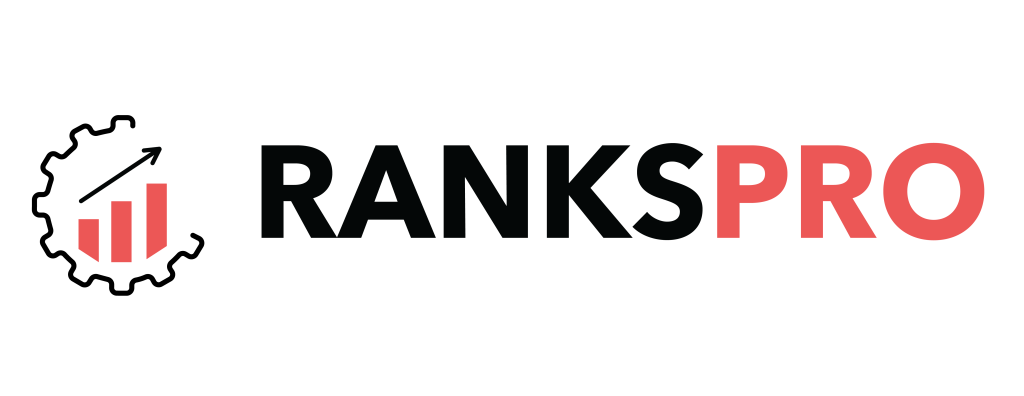In the dynamic world of Search Engine Optimization (SEO), results matter. But just as crucial as achieving those results is effectively communicating them to your clients.
A well-crafted SEO report is more than just a collection of numbers; it’s a vital tool for showcasing your hard work, demonstrating the value of your services, justifying ongoing investment, and fostering a strong, transparent client relationship.
As we navigate 2025, with AI reshaping search and user expectations evolving, your SEO reports need to be insightful, actionable, and, above all, client-focused.
This comprehensive guide will walk you through everything you need to know to create SEO reports that not only inform but also impress your clients.
Step 1: Understanding Your Client’s Objectives for Setup
Before you even think about metrics and charts, the first step is to deeply understand your client and their business.
The Initial Consultation: Aligning on Business Goals
What does success look like for your client? Is it more online sales, a higher volume of qualified leads, increased brand visibility within a specific niche, or greater foot traffic to their local store? Without this clarity, your report will lack direction. Document these overarching business objectives.
Defining Key Performance Indicators (KPIs)
Once business goals are clear, translate them into measurable SEO KPIs. For an e-commerce client, KPIs might include organic revenue, transaction conversion rate, and rankings for high-intent product keywords.

For a B2B client, it might be organic lead form submissions, whitepaper downloads, and visibility for problem-solving keywords. Avoid relying on generic metrics; establish custom KPIs that resonate with their specific objectives.
Establishing Reporting Frequency and Format
Discuss and agree on how often reports will be delivered.
- Monthly: Most common and generally provides enough data to show meaningful trends without being overwhelming.
- Bi-weekly: Can be useful for very active campaigns or new clients needing more frequent updates.
- Quarterly: Good for a higher-level strategic review and long-term trend analysis, often supplementing monthly reports. Also, discuss their preferred format – a detailed PDF, an interactive dashboard, or a combination.
Step 2: Gathering the Essential SEO Data
To build a comprehensive SEO report, you’ll need to pull data from various sources. Here are some of the core tools used in 2025:
Use Free Tools
- Google Analytics 4 (GA4): Your primary source for understanding website traffic (organic sessions, new users, bounce rate, average session duration), user behavior, landing page performance, and, crucially, conversions (goal completions).
- Google Search Console (GSC): Essential for insights directly from Google. Track impressions, clicks, click-through rates (CTR), average keyword positions, identify crawl errors, monitor Core Web Vitals, check indexing status, and submit sitemaps.
Step 3: Key Components of an Effective Client SEO Report
A robust SEO report should tell a clear story of performance, challenges, and future direction. Here’s a breakdown of essential sections:
Executive Summary
This is the “TL; DR” (Too Long; Didn’t Read) of your entire report, placed right at the beginning.
- High-level overview: Briefly summarize the most significant achievements, any notable challenges encountered, and the overall progress made towards the client’s primary goals during the reporting period.
- Key Highlights: Use bullet points for 3-5 major wins or important observations.
- A Brief Look Ahead: Hint at the focus for the next reporting period.
- People-First Tip: Write this section last, after you’ve analyzed all the data. This ensures your summary is accurate and impactful.
Performance Overview Against Goals & KPIs
Directly address the KPIs established in Step 1.
- Clearly show how your SEO efforts are contributing to the client’s main business objectives.
- Use visuals (like scorecards or progress bars) to illustrate performance against targets for each key KPI.
- Include comparisons (Month-over-Month (MoM), Year-over-Year (YoY)) to provide context.
Organic Traffic Analysis
Organic traffic is often a primary indicator of SEO success.
- Overall Organic Traffic Trends: Show total organic sessions, new users, and trends (MoM, YoY) using line graphs.
- Traffic by Device: Break down organic traffic by desktop, mobile, and tablet. Crucial given mobile-first indexing.
- Top Organic Landing Pages: Which pages are attracting the most organic visitors? Are these the pages you expect/want?
- Branded vs. Non-Branded Traffic: Segmenting this can show the impact of your SEO efforts in attracting new audiences (non-branded) versus those already familiar with the client (branded).
- User Engagement Metrics: This includes:
- Bounce Rate: Percentage of visitors who leave after viewing only one page. A high bounce rate might indicate content irrelevance or poor user experience.
- Average Session Duration: How long visitors are spending on the site on average.
- Pages Per Session: The average number of pages a visitor views during a session.

- People-First Tip: Don’t just present numbers. Explain what they mean. For example, “The 15% increase in organic traffic this month led to a 10% rise in new user inquiries via the contact form.”
Keyword Rankings & Visibility
Clients are often very interested in where their website ranks for target keywords.
- Keyword Ranking Performance: Track rankings for a curated list of high-value, targeted keywords. Show current rank, change from the previous period, search volume, and the ranking URL.
- SERP Features: Note if you’re capturing Featured Snippets, People Also Ask boxes, or other SERP features, as these can significantly impact visibility.
- Visibility Score / Impression Share: Metrics provided by some SEO tools that estimate overall search engine visibility. GSC provides total impressions.
- New Keyword Rankings: Highlight any new, relevant keywords the client’s site has started ranking for.
- Latest Trend Note for 2025: Address the rise of AI Overviews and zero-click searches. While high rankings are still important, explain how these SERP changes might affect click-through rates. Focus on the quality of traffic and conversions, not just rank positions.
Conversion Tracking & ROI
This is often the most critical section for clients, as it ties SEO efforts directly to business outcomes.
- Organic Goal Completions: Track conversions from organic traffic. This could be:
- Sales (for e-commerce)
- Lead form submissions
- Newsletter sign-ups
- Phone calls (if call tracking is implemented)
- Downloads (e.g., PDF guides, case studies)
- Organic Conversion Rate: The percentage of organic visitors who complete a desired action.
- Assisted Conversions: Show instances where organic search played a role in a conversion, even if it wasn’t the last touchpoint.
- SEO Return on Investment (ROI): If possible and appropriate (especially for e-commerce or lead-gen with clear values), attempt to calculate the ROI of your SEO efforts. (SEO Profit / SEO Costs) x 100.

- User Intent Focus: Frame these metrics in terms of their business impact. “Our optimization of service pages resulted in 25 qualified leads from organic search this month, a 20% increase.”
Backlink Profile Health
Backlinks remain a significant ranking factor.
- New Backlinks Acquired: Focus on the quality and relevance of new links, not just the quantity.
- Lost Backlinks: Monitor significant lost links and investigate if necessary.
- Total Referring Domains: The number of unique websites linking to the client. Growth here is generally positive.
- Domain Authority (DA) / Domain Rating (DR): While a third-party metric, many clients are familiar with it. Show trends but educate them that it’s an indicative metric, not an absolute measure of SEO success.
Technical SEO & Site Health
A technically sound website is the foundation of good SEO.
- Core Web Vitals (CWV): Report on Largest Contentful Paint (LCP), Interaction to Next Paint (INP – which has replaced First Input Delay/FID), and Cumulative Layout Shift (CLS) from GSC. These are crucial for user experience and rankings.
- Page Load Speed: Provide an overview of site speed and highlight any improvements or ongoing issues.
- Mobile-Friendliness: Confirm the site passes mobile-friendliness tests.
- Crawl Errors & Indexing Issues: Summarize any critical errors found in GSC (e.g., server errors, 404s affecting important pages, pages not indexed) and what’s being done to address them.
- XML Sitemap Status: Ensure it’s submitted and being processed correctly by Google.
Content Performance Insights
If content creation/optimization is a core part of your strategy:
- Top-Performing Content: Identify blog posts or pages driving significant organic traffic, engagement, or conversions.
- Content Gaps & Opportunities: Suggest new content topics or areas for content improvement based on keyword research and competitor analysis.

Competitor Snapshot
A brief look at how key competitors are faring can provide context.
- Compare keyword rankings for a small set of mutually targeted terms.
- Note any significant strategic shifts or content successes from competitors.
- Caution: Keep this section brief and focused on actionable insights, not just a data dump of competitor metrics.
Summary of Work Completed
Transparency about your efforts is key.
- Provide a concise list of the main SEO tasks and activities performed during the reporting period (e.g., “Published 4 optimized blog posts,” “Resolved 50 crawl errors,” “Built 5 high-quality backlinks to X page,” “Optimized meta descriptions for service pages”).
- Where possible, briefly connect these activities to observed results.
Insights, Analysis & Recommendations
This is arguably the most crucial part of your report, where you showcase your expertise and strategic thinking.
- Interpret the Data: Don’t just present numbers. Explain why specific metrics went up or down. What do the trends mean?
- Provide Actionable Recommendations: Based on the data and your analysis, what are the concrete steps for the next period? These should be specific, measurable, achievable, relevant, and time-bound (SMART).
Example: “Due to the high bounce rate on X landing page, we recommend A/B testing a new headline and call-to-action next month.”
- Outline Upcoming SEO Activities: Briefly state your strategic focus and planned activities for the next month or quarter. This keeps the client informed and aligned.
Step 4: Presenting Your SEO Report
How you present your report is as important as what’s in it.
Keep it Clear and Concise
Avoid overwhelming clients with excessive data or technical jargon. If you must use a technical term, provide a simple explanation.
Utilize charts, graphs, scorecards, and dashboards. Line graphs are great for trends, pie charts for traffic sources, and bar graphs for comparisons. Tools like Looker Studio excel here.
Structure your report to narrate the client’s SEO progress. Connect the metrics back to their initial goals and show how your efforts are moving them forward.
Customize for Better Accessibility
No two clients are the same. Tailor the depth of information, the language used, and the metrics highlighted based on their specific business, goals, and level of SEO understanding.
Be Transparent and Accountable
Report both successes and challenges. If rankings dropped due to an algorithm update or a technical issue arose, address it proactively and outline your plan to mitigate or fix it.
Schedule a Walkthrough
Whenever possible, don’t just email the report. Schedule a call or meeting (virtual or in-person) to walk the client through the key findings, answer their questions in real-time, and discuss the recommendations. This fosters dialogue and understanding.
Common Pitfalls in SEO Client Reporting
Focusing on Vanity Metrics
Reporting on metrics that look impressive but don’t contribute to the client’s business goals (e.g., a huge number of low-value keyword rankings). Avoid by: Always tying metrics back to agreed-upon KPIs and business objectives.
Overwhelmed with Raw Data
Presenting endless spreadsheets or lists of numbers without context or explanation. Avoid by: Using clear visuals, summaries, and focusing on the most important insights.
Lack of Actionable Insights or Recommendations
A report that only shows data without explaining what it means or what to do next is of limited value. Avoid by: Dedicating a significant portion of your report to analysis and clear, actionable next steps.
Inconsistent Reporting
Irregular reporting or constantly changing formats can confuse clients. Avoid by: Establishing a consistent schedule and template (while still allowing for customization).
Not Aligning with Client Goals
If the report doesn’t speak to what the client cares about, it will fall flat. Avoid by: Starting with a clear understanding of their objectives (Step 1) and ensuring the report reflects these.
Using Excessive Technical Jargon
Confusing clients with SEO-speak they don’t understand. Avoid by: Explaining technical terms simply or using analogies. Gauge their SEO understanding during onboarding and tailor your language.
Ignoring Zero-Click Searches & AI Overviews
In 2025, failing to address how AI in SERPs impacts traffic and the interpretation of traditional metrics like rankings is a miss. Avoid by: Educating clients on these trends and shifting focus towards quality traffic and conversions.
Utilize RanksPro for White Label SEO Reporting
When it comes to automating and streamlining your SEO reporting process, RanksPro offers a powerful white-label SEO reports tailored for agencies and consultants.
With fully customizable reporting dashboards, RanksPro allows you to showcase your brand, not a third-party tool, which helps maintain professionalism and consistency in client communications.

RanksPro’s white-label SEO reporting includes features such as:
- Custom Branding: Add your agency’s logo, colors, and domain to reports.
- Automated Reporting: Schedule weekly, bi-weekly, or monthly report deliveries directly to clients.
- Multi-Platform Integration: Connect tools like Google Analytics, Search Console, Ahrefs, and SEMrush for consolidated insights.
- Client Portal Access: Give clients login-based access to their reports, enhancing transparency and engagement.
- Detailed Metrics: Present keyword rankings, backlink growth, technical audit results, and more in easy-to-understand visuals.
This platform not only saves time but also boosts client retention by offering them visually engaging, data-rich reports that reinforce your agency’s value.
Creating effective SEO reports in 2025 is about much more than fulfilling an obligation. It’s an opportunity to solidify your client relationships, showcase the tangible impact of your SEO strategies, and collaboratively chart a course for future success.




